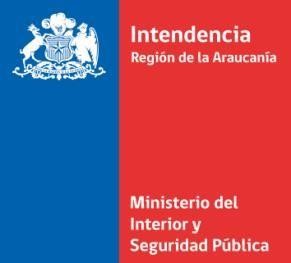SAFE WORK PROCEDURE 019 DRIVING REVISED 20071114 ASSOCIATED HAZARDS
ALL SCHOOL PROCEDURES AND POLICIES FROM THE STUDENTDISCHARGE OF CARE ORDERS – STANDARD PROCEDURE THE
ILLICIT DISCHARGE DETECTION AND ELIMINATION FIELD PROCEDURES AND
OFFICE OF STUDENT EMPLOYMENT PROCEDURE FOR GRADUATE
Procedures for Varying Shared Ownership Leases Background
YOUTH OFFENDING SERVICE HOME VISITLONE WORKING PROCEDURE
SWP
|
Safe Work Procedure #019
Driving Revised 2007/11/14
|
Associated Hazards
Poor weather conditions
Poor visibility (fog, snow, sleet, light, glare, etc.)
Traffic (amount and vehicle types)
Vehicle not appropriate for task or terrain
Road type and condition (including condition of planned work area) which may result in loss of control, poor traction, getting stuck, etc.
Vehicle breakdown (mechanical, poor tires, overloaded, etc.)
Driver condition (age, attitude, medication, overly emotional, drowsiness, fatigue, physical impairment, intoxication, drugs)
Driver Distractions (Distracting conversations, Retrieving or adjusting cargo, Reading, Note taking, Talking on a communication device, Using a laptop, Eating and drinking, Adjusting radio or console settings)
Mandatory Requirements
Training
Defensive Driving – optional (supervisors discretion)
Skid Control (required for those driving on unpaved roads or in slippery conditions)
Transportation of Dangerous Goods, if appropriate
WHMIS, if appropriate
Personal Protective Equipment
Fire extinguisher (multi-purpose, dry-chemical type) conforming to standard
Survival kit (Appendix A, General Field Operations), vehicle and personal as required
First Aid kit (Appendix B, General Field Operations)
Sunglasses
Procedure
Pre-trip Planning
Review associated THA/SWP for tasks that will be performed on the trip such as: General Field operations, ball hitch trailers, ATV/snowmobile, etc.
Check the weather forecast.
Check the road conditions.
If required, plan alternate route, or postpone trip until conditions improve.
Complete itinerary and follow call-in procedure.
Assessing the Vehicle
Confirm condition of the following:
defroster and windshield wipers.
brakes, including the emergency brake.
tires, including the spare and check for treadwear and correct inflation.
condition of cargo barrier/restraint.
steering and suspension.
horn, lights, mirrors (rear view and side view).
exhaust system.
occupant restraints.
fluid levels: fuel, oil, washer fluid, brake fluid, transmission fluid, power steering.
make sure cab is clutter free and free of items that may cause injury in a sudden stop or become lodged under the gas or brake pedal.
ancillary equipment: fire extinguisher, survival kit, first aid kit, jack, lug nut wrench. A proper seasonal survival kit is required for remote and long distance highway driving (for example: candle, sleeping bag).
load vehicle to ensure even distribution and that load does not exceed carrying capacity of the vehicle. Use vehicle appropriate to the weight to be transported.
Ensure windows and lights are clear.
Familiarize yourself with where all controls are and how they operate.
Ensure that vehicle documents are up-to-date.
Ensure that insurance documents are up-to-date for vehicles that are crossing the U.S. Border.
For rental vehicles follow rental procedures. Be aware that there are restrictions on vehicle usage (for example, the insurance on the American Express credit card states that rental vehicles are only to be used on paved roads and only cover vehicles of a certain retail value – be aware of implications of free upgrades to a luxury vehicle).
Perform safety circle check.
Ensure that an annual safety inspection is conducted by a certified automotive technician.
Driving the Vehicle
Headlights must always be on while the vehicle is in motion.
Adjust driving to suit current road conditions. For example, in adverse light conditions:
reduce speed.
increase following distance.
take extra care to watch for road hazards such as rocks, animals, pedestrians and cyclists.
don't overdrive your headlights.
keep vehicle lights clean and properly aimed.
Use sunglasses for bright sunshine or snow glare and use a sun visor.
Avoid looking directly at oncoming bright headlights.
Slowdown, maintain a safe following distance and be alert for the following:
rain can result in slippery conditions and hydroplaning is a concern. Note: Cruise control should not be used when roads are wet or it is raining. Studies have shown that as tires hydroplane, the cruise control does not read accurately and that the vehicle is actually traveling as much as 10 kmh faster than the speedometer indicates.
bridges and overpasses freeze before roadways.
high winds affect steering.
loose gravel.
pay extra attention to oncoming vehicles.
in snowy or foggy conditions use your low beams to reduce glare.
Drive defensively and be aware of whom you are sharing the road with:
vehicles approaching at intersections.
pedestrians have the right of way.
treat motorcycles as full size vehicles.
maintain pace with traffic, but don't speed.
avoid congested routes when possible.
if in doubt or to avoid an accident, yield to other vehicles.
Obtain necessary permissions to drive on private roads.
Test traction by gently applying brakes at a slow speed.
Properly brake under various road conditions. (ABS brakes should not be pumped).
Watch for construction signs and obey directions.
Be cautious when entering private roads, farmer's fields or other areas which may or may not support a vehicle (muddy roads, crevasse due to run-off etc).
Be trained in safe driving techniques.
Do not drive with any physical or mental limitations that may impair driving:
Do not drive when you are tired – take rest breaks as required.
Do not drive while impaired or taking medications (drugs) which could impede driving ability.
If traveling with another individual, share the driving responsibilities if on a long distance trip.
Make sure you are not using a cell phone, Blackberry, or any other form of communications device while driving. This includes “hands-free” technology. You must stay focused on the task at hand (driving); always pull safely to the side of the road and park your vehicle in a safe location prior to using these communication devices.
Be aware that specific Driver Distractions "not permitted" while driving include, but are not limited to:
Distracting conversations.
Retrieving or adjusting cargo.
Reading.
Note taking.
Using a laptop.
Adjusting radio or console settings.
Eating and drinking.
Where possible, all vehicles should be parked to avoid the need to move in reverse when leaving the parked space. When moving in reverse is unavoidable, the driver must ensure the path is clear at the rear of the vehicle; use a signal person to give directions and honk the vehicle’s horn before proceeding.
Employees are not permitted to pick up hitchhikers except in emergencies.
Post trip procedures
Clean vehicle.
Leave the vehicle in good operating condition with all fluids topped up for the next user.
Report and rectify any problems encountered with the vehicle during the trip (with your supervisor’s approval) or report them to the fleet manager.
Remember that all accidents that cause damage to government vehicles must be reported under the Hazardous Occurrence Incident Report (HOIR) procedures.
|
|
|
|
|
Manager’s name & signature / Date |
|
Employee’s name & signature / Date |
Page
(REPORT TEMPLATE) INDEPENDENT ACCOUNTANT’S REPORT ON APPLYING AGREEDUPON PROCEDURES
(YOUR BUSINESS NAME HERE) – SAFE WORK PROCEDURE
(YOUR BUSINESS NAME HERE) – SAFE WORK PROCEDURE PORTABLE
Tags: associated, 20071114, procedure, revised, hazards, driving
- 2 ACTA QUE ESTABLECE LAS REGLAS QUE DEBEN OBSERVAR
- ANTRAG ZUR ERTEILUNG VON RELIGIONSUNTERRICHT IN KONFESSIONELL GEMISCHTEN LERNGRUPPEN
- CEDAWCPSWG661 CEDAWCPSWG661 DISTR GENERAL 29 JULY 2016 ORIGINAL ENGLISH
- CE2 MANUAL DE PROGRAMACION VERSION 21 EL CE2 (CLONEEDITOR
- ORDERING MEASURING AND COUNTING CAROLINGIAN RULE CULTURAL CAPITAL AND
- KLASA 007011601 URBROJ 2109051601 UGOVOR O DODJELI FINANCIJSKIH SREDSTAVA
- NAZWISKO I IMIĘ SZCZAWNICA DNIA ADRES KIEROWNIK
- NVF41 ARBEJDSGRUPPE DRIFTSSTRATEGI DATO 20030711 REV FORELØBIG UDGAVE INIT
- EUROPEJSKI TRYBUNAŁ PRAW CZŁOWIEKA SEKCJA CZWARTA SPRAWA RADUCKI PRZECIWKO
- 2 MINISTERSTWO KOMUNIKACJI CENTRALNY ZARZĄD KOLEI DOJAZDOWYCH OBSŁUGA I
- INCO CONCERTED ACTION ICA4CT200110020 SCIENTIFIC ANNUAL REPORT YEAR 2
- FORSKRIFT OM GEBYRREGULATIV FOR SAKSHANDSAMING AV BYGGE FRÅDELING OG
- 2005 ASSESSMENT REPORT FEEDBACK FORM COLLEGE ASSESSMENT COORDINATORS COMMITTEE
- 52615755a766ee1e2e6dd8f4f14838f9_Permohonan%20penumpukan%20bbm
- VERSIÓN AGENTES PROGRAMA DE ACTUALIZACION DE GESTION ADUANERA PARA
- PROTOKÓŁ Z POSIEDZENIA JURY XI EDYCJI WOJEWÓDZKIEGO PRZEGLADU DZIECIĘCEJ
- PAKALPOJUMA NOSAUKUMS PĀRMAKSĀTĀ NEKUSTAMĀ ĪPAŠUMA NODOKĻA UN KĻŪDAINI IESKAITĪTO
- SYMBIOS ÄR DET ORD SOM I MITT TYCKE BÄST
- OFFICE ONLY DATE RECEIVED CATHOLIC CHARITIES MAINE ST
- PROGRAM COORDINATOR SCHOOL – AGREEMENT THIS AGREEMENT IS
- EQUIPE CLINIQUE DE L’ACTIVITE ÉQUIPE DE PSYCHOLOGIE DU TRAVAIL
- LEY 155 DE 1959 (DICIEMBRE 14) POR LA
- PRILOG 3 METODOLOGIJA ODABIRA PROJEKATA SUKLADNO KRITERIJIMA ODABIRA OPERATIVNI
- TEMELJEM ČLANKA 391 ZAKONA O VLASNIŠTVU I DRUGIM STVARNIM
- SURAT TUGAS NOMOR IN28R1TL01042019 MENIMBANG A BAHWA
- FORMULARIO 5 PROGRAMA DE APOYO A LA FORMACIÓN
- Sisačkomoslavačka Županija Općina Jasenovac Općinsko Vijeće Općinsko Vijeće Klasa
- REAL DECRETO 4352004 DE 12 DE MARZO POR EL
- THE IDEAL OF DHARMA ¼KEZ½ OR JUSTICE IN INDIAN
- 43 СРЕДНЕМЕСЯЧНАЯ НОМИНАЛЬНАЯ НАЧИСЛЕННАЯ ЗАРАБОТНАЯ ПЛАТА РАБОТНИКОВ ОРГАНИЗАЦИЙ (РУБЛЕЙ)
ACTA FUNDACIONAL DE LA ASOCIACIÓN DE PROMOCIÓN Y RECREACIÓN
 U NIVERSIDAD NACIONAL EXPERIMENTAL DEL YARACUY VICERRECTORADO
U NIVERSIDAD NACIONAL EXPERIMENTAL DEL YARACUY VICERRECTORADO  NATIVIDAD SALAS ROLDÁN JESÚS PELEGRÍN SALAS JESÚS ANTONIO LORCA
NATIVIDAD SALAS ROLDÁN JESÚS PELEGRÍN SALAS JESÚS ANTONIO LORCAANNUAL PROJECT REPORT 00096939 HYDROGEN ECONOMY PILOT IN CHINA
ENCLOSED IS MY CONTRIBUTION CHECK OF TO HELP
 ADOBE CAPTIVATEGRAPH WEDNESDAY MARCH 09 2022 SLIDE 3
ADOBE CAPTIVATEGRAPH WEDNESDAY MARCH 09 2022 SLIDE 3 KAUNO IKIMOKYKLINIŲ ĮSTAIGŲ VAIKŲ SVEIKATOS UGDYMO METODINĖS GRUPĖS REGLAMENTAS
 REAL DECRETO 13161992 DE 30 DE OCTUBRE POR EL
REAL DECRETO 13161992 DE 30 DE OCTUBRE POR EL ŠTEDNJA AKUMULACIJA KAPITALA I DOMAĆI PROIZVOD DUGI ROK
ŠTEDNJA AKUMULACIJA KAPITALA I DOMAĆI PROIZVOD DUGI ROK URWERK PRESENTA EL « UR CC1 » CÓDIGONOMBRE «
URWERK PRESENTA EL « UR CC1 » CÓDIGONOMBRE «ÖZGEÇMİŞ İSİM GÜLŞAH KANER KIŞISEL BILGILER
Information Sheet About Participation in a Research Study Titled
TIEMPO MODELO + 1900 1960 MODELO
CHAFFEY COLLEGE AUXILIARY SERVICES REQUISITION PLEASE PRINT IN BLUE
Dª MERCEDES CABRERA CALVOSOTELO MINISTRA DE EDUCACIÓN Y CIENCIA
OPTIONS WHAT ARE OPTIONS? TO OWN AN OPTION ON
 GROUP 111840 NÓMINA DE AUTORIDADES SERVICIOS E INSTITUCIONES REGIÓN
GROUP 111840 NÓMINA DE AUTORIDADES SERVICIOS E INSTITUCIONES REGIÓNTHE SECRETARY’S ANIMAL CARE AND ETHICS COMMITTEE (SECRETARY’S ACEC)
HORT 423 – TROPICAL HORTICULTURE FALL 2007 COURSE
HOMEWORK 2 DUE SEP 23 2010 1) SHOW THAT